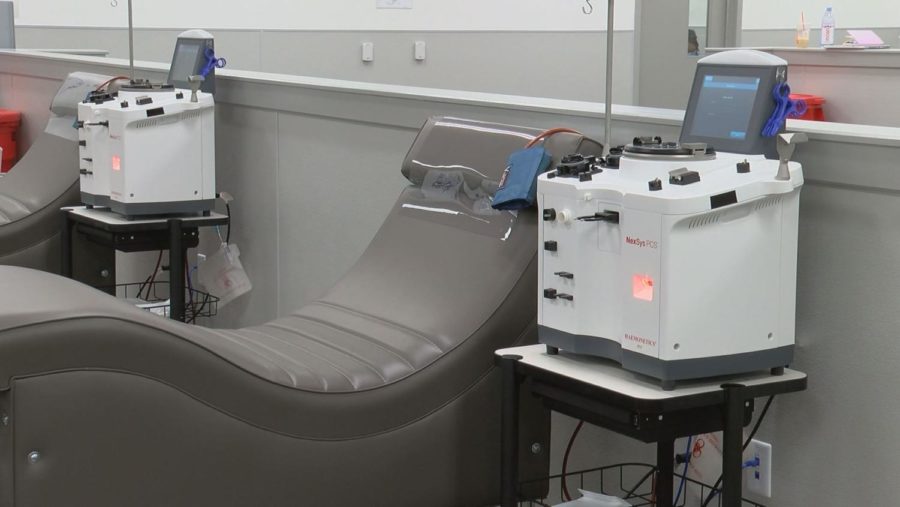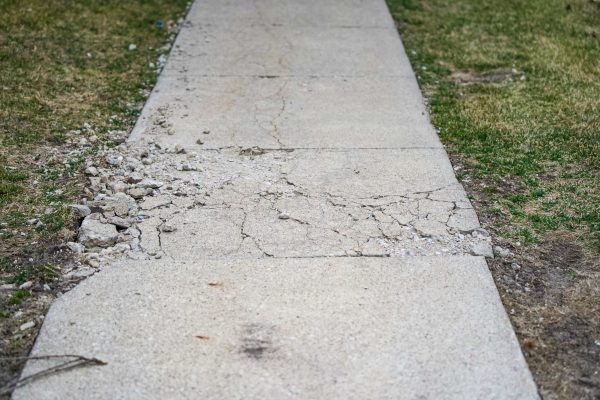Guide to an easy and comfortable plasma donation
Grifols is a plasma donation center in Ames that sees 80 to 100 patients a day.
Sitting in a blood-donor lounge chair with a needle in your arm may not be the most comfortable way to make money, but it is seemingly the fastest.
First-time plasma donors can typically receive up to $1,000 in their first month, depending on the facility chosen. After the first month, each donation can earn you between $50-$100, and patients can donate twice per week.
In Ames, BioLife and Grifols are always looking for new and returning donors. The plasma donation process can take a toll on your body, so it’s important to fuel your body beforehand.
How to prepare
Before donations, patients will undergo a health screening. Along with analyzing general health, temperature, weight, protein and iron levels are checked, according to Vlasta Hakes, senior director of corporate affairs at Grifols.
For the first donation, Hakes recommends expecting to be in the facility for two to three hours, as a physical is required. After this, every other donation should be completed within an hour.
“Get a good night’s rest before coming into the center,” Hakes said. “Make sure that you are well hydrated, so drinking plenty of water before coming in, and then also eating a healthy meal.”
Being well hydrated will slightly accelerate the process of donating. Hakes recommends four to eight ounces of water or other non-caffeinated drinks. Avoiding alcohol for 24 hours prior is not a requirement, but a strong recommendation. Eating a high protein meal will minimize possible negative effects, such as feeling lightheaded after donating.
“One of the things that sometimes people do is they come in, and because they’re nervous, they haven’t had breakfast or they haven’t had lunch,” Hakes said. “That could cause some discomfort, so we highly recommend that you have a nice balanced meal.”
Chicken (real or a vegan substitute) and eggs are easy meal options that are high in protein. Meals with high levels of dairy and fat should be avoided.
While testing iron levels at home is not possible as it is done through blood samples, there are some symptoms people can look for. Low iron, or anemia, can cause fatigue, ice cravings, headaches and shortness of breath, according to Amy Navrkal, advanced registered nurse practitioner (ARNP) at Thielen Student Health Center.
“For people who have mild anemia, typically a basic daily multivitamin containing iron is sufficient treatment,” Navrkal stated over email. “A daily iron tablet that is commonly used is ferrous sulfate, and it also comes in liquid form. If someone has gastrointestinal side effects from the ferrous sulfate, then I typically recommend ferrous gluconate.”
When taking iron supplements, Navrkal recommends taking them regularly.
Who can’t donate?
If someone has a chronic condition, such as hemophilia or cancer, they are unable to donate, according to Hakes. Being ill on the day of donation will also result in being rejected for that donation.
Someone who has gotten a tattoo or piercing is unable to donate for four months, due to the needles that are used.
“Back in the day, needles, particularly tattoo needles, resulted in HIV and hepatitis C transmissions,” Hakes said, “so this is just a safety thing to help preventing transmission of transmissible diseases.”
With tattoo quality and certifications improving over the last few years, the ineligible donor period after tattoos and piercings decreased from six months. If the tattoo or piercing was done by an unlicensed artist, the time increases to one year.
Those who have HIV, have gone through transplants, have major organ problems or have tested positive for hepatitis B or C are also unable to donate.
The weight requirement for donation is 110 pounds.
What to bring
For the first donation, an ID, social security number and proof of residency in the area of the facility is required.
Donating plasma requires squeezing your hand, with a few short breaks, for the better half of an hour. Bringing a stress ball, or something soft to squeeze, can help make this process more comfortable.
Once you’re in the chair, it is helpful to have something to do to keep your mind off the blood leaving and reentering your body. A book, headphones or homework that can be done with one hand could cure the boredom that comes with sitting and waiting for the donations to be done.
Bringing a water bottle can also be a good idea to keep yourself hydrated throughout the donation.
Your donation will support the student journalists of the Iowa State Daily. Your contribution will allow us to purchase equipment, send our student journalists to conferences and off-set their cost of living so they can continue to do best-in-the-nation work at the Iowa State Daily.












